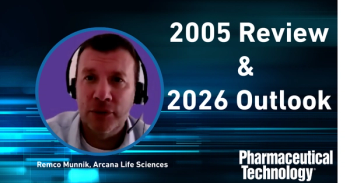
- Pharmaceutical Technology-06-02-2008
- Volume 32
- Issue 6
Preformulation in Theory and Practice
An ambitious survey of characterization techniques presents current information.
Like beauty, preformulation is in the eye of the beholder. As coeditor Harry Brittain points out in his introduction to Preformulation in Solid Dosage Form Development, the early-stage scientist sees preformulation as the process of characterizing a new drug substance "to learn about its properties and tendencies." This information helps discovery teams identify compounds for development. For the late-stage scientist, preformulation information is needed to support decisions about formulation options and processing.
In this book, coeditors Brittain and Moji Adeyeye outline a preformulation program that meets the needs of early-and late-stage scientists. The goal of Preformulation in Solid Dosage Form Development is to address the "basic and applied principles important to the characterization of drugs, excipients, and products during the preformulation stage in development." It is an ambitious undertaking to cover this topic in a book of about 600 pages. The authors and editors largely succeed, however, in their effort to set out a program that can be applied to most drug candidates.
The topics are explored in a logical and effective manner with, as the coeditors state, "both industry scientists and the regulatory authorities in mind." The book is divided into four major sections dedicated to preliminary preformulation, drug-substance characterization, formulation development, and the considerations that arise after preformulation.
The section about preliminary preformulation describes the molecular, physicochemical, and crystallographic characteristics of drugs; salt selection; and the application of artificial neural networks in preformulation. Though the chapters about predicting physicochemical properties and applying artificial neural networks are somewhat limited, other chapters within this section provide useful details about the predictive tools available to preformulation scientists.
The book's most valuable and informative sections are in the part dedicated to drug-substance characterization. This part's strength is its extensive discussion of analytical methods and the numerous examples that illustrate the methods' application to preformulation characterization challenges and interpretation of results.
A chapter about developing an active pharmaceutical ingredient profile prepares the stage for examinations of particle morphology and characterization, polymorphs and solvatomorphs, X-ray diffraction and spectroscopic analysis, and thermal and calorimetric methods. This section's extensive discussions of methods and interpretation include many pharmaceutically relevant examples such as case studies on polymorphism, solubility, and thermal analysis.
Part 4 of the book covers the development of the ideal formulation. The chapter about drug–excipient interactions is especially comprehensive and includes 100 references. Many examples illustrate the diversity of possibilities and challenges associated with drug–excipient interactions. A chapter about strategies for evaluating drug–excipient interactions is equally well referenced and focuses on analytical methods that aid physical and chemical compatibility studies. A comprehensive chapter about dissolution testing completes the section.
The book's last section offers a concise discussion of the content and structure of a preformulation report. The final chapter addresses the significance of a drug substance's physicochemical properties as they relate to quality-by-design considerations.
Overall, this book offers in-depth information, based on current literature, about the analytical methods and interpretation that are valuable for drug characterization, excipient compatibility studies, and dissolution testing. The book is a worthwhile resource for pharmaceutical scientists interested in enhancing their understanding of preformulation and as a compendium of the tools available to pharmaceutical scientists.
Greg Amidon is a research professor of pharmaceutical sciences at the University of Michigan, 428 Church St., Ann Arbor, MI 48109-1065, tel. 734.936.7438,
Richard Hwang is a senior director of pharmaceutical sciences at Pfizer and a member of Pharmaceutical Technology's editorial advisory board.
Articles in this issue
over 17 years ago
Healthcare Reform Proposals Challenge Manufacturersover 17 years ago
The Use of Complainingover 17 years ago
Pharma Capsulesover 17 years ago
PDA Takes On Risks for Patientsover 17 years ago
Cell Manufacturing on a Large Scaleover 17 years ago
In the Spotlight June 2008over 17 years ago
Innovations at INTERPHEX: Part 2over 17 years ago
Small Wonder: Nanoparticle Strategies for Biological DrugsNewsletter
Get the essential updates shaping the future of pharma manufacturing and compliance—subscribe today to Pharmaceutical Technology and never miss a breakthrough.




